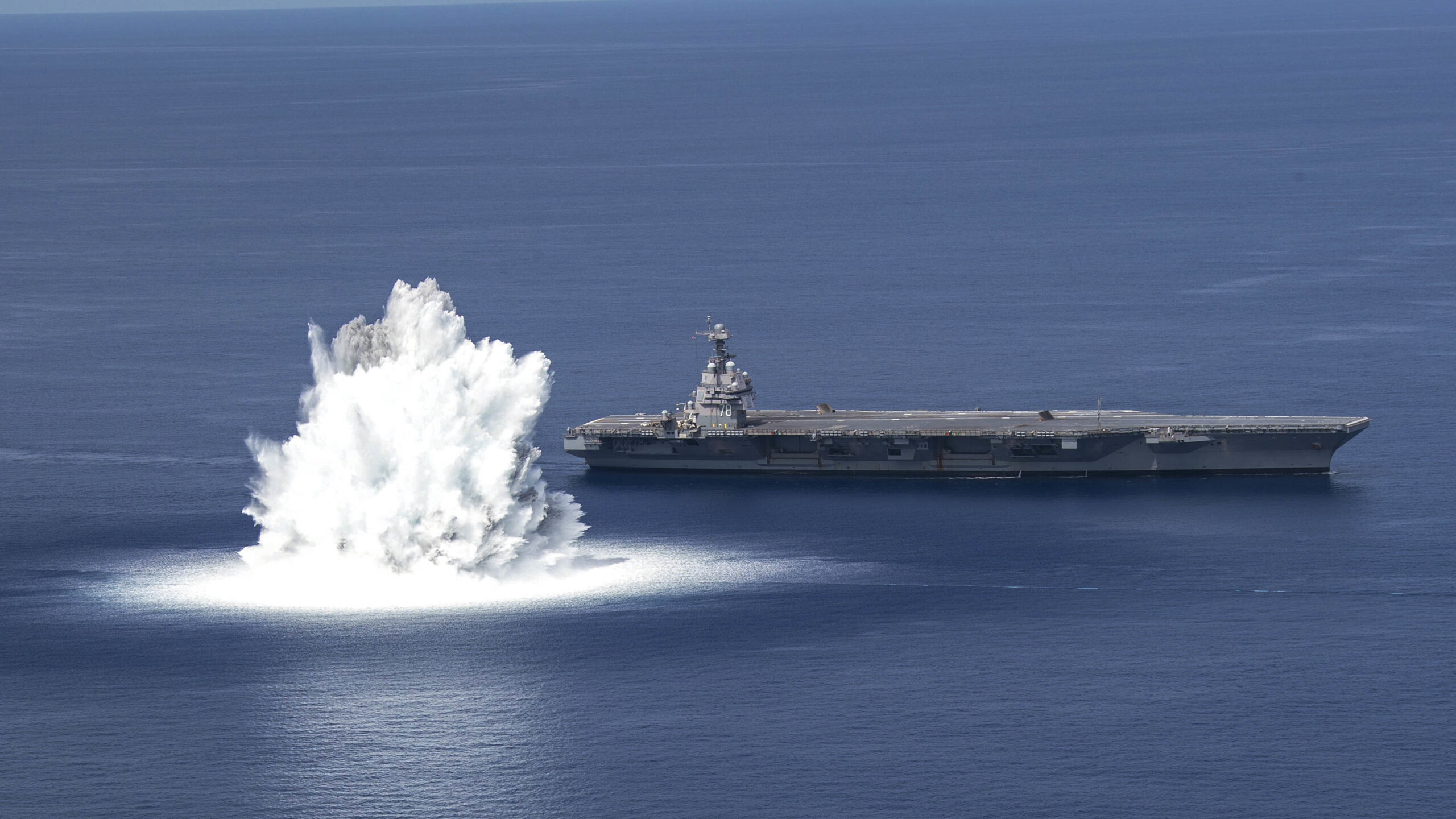
The aircraft carrier USS Gerald R. Ford (CVN-78) completes the first scheduled explosive event of Full Ship Shock Trials while underway in the Atlantic Ocean, June 18, 2021.(File)
WASHINGTON: The Navy is actively preparing four aircraft carriers to receive upgrades related to the Project Overmatch, according to the admiral in charge of servicing and building the carriers, though details were scarce.
“There are four carriers that we’re working on right now to introduce those capabilities. I won’t go in the specific hulls or the strike groups, but I’ll say that’s how carriers are built — to bring these systems aboard,” Rear Adm. James Downey told reporters during a telephone roundtable on Friday.
Project Overmatch is the Navy’s piece of the Pentagon’s Joint All Domain Command and Control (JADC2) effort, led by a two star admiral in California who reports directly to the chief of naval operations. In theory, Overmatch will link together the Navy’s many vessels and systems across the battle space. In practice though, what capabilities are going into Overmatch — and JADC2 in general — is unclear.
RELATED: Navy Acquisition Commands Preparing Project Overmatch Liaison Offices
Downey said that while the upgrades being made are “not minor,” they also do not require hull, mechanical or electrical changes to the ships, even on older vessels such as the Nimitz-class carriers. For the newer Gerald Ford-class, the ships were designed with a “flexible infrastructure design,” he added.
“Ford-class is designed to take in systems like the Project Overmatch capabilities — most of it without significant hot work,” Downey said. “Historically about 40% of the modernization work goes to rip out — and that was specifically designed into Ford to not have to deal with that.”
Chief of Naval Operations Adm. Michael Gilday in September said he expects the first iterations of Project Overmatch to reach a carrier strike group in either late fiscal 2022 or early fiscal 2023.
The service last month announced it had taken delivery of the final advanced weapons elevator, a significant milestone for the program, albeit one that was paved with schedule delays and congressional headaches.






















